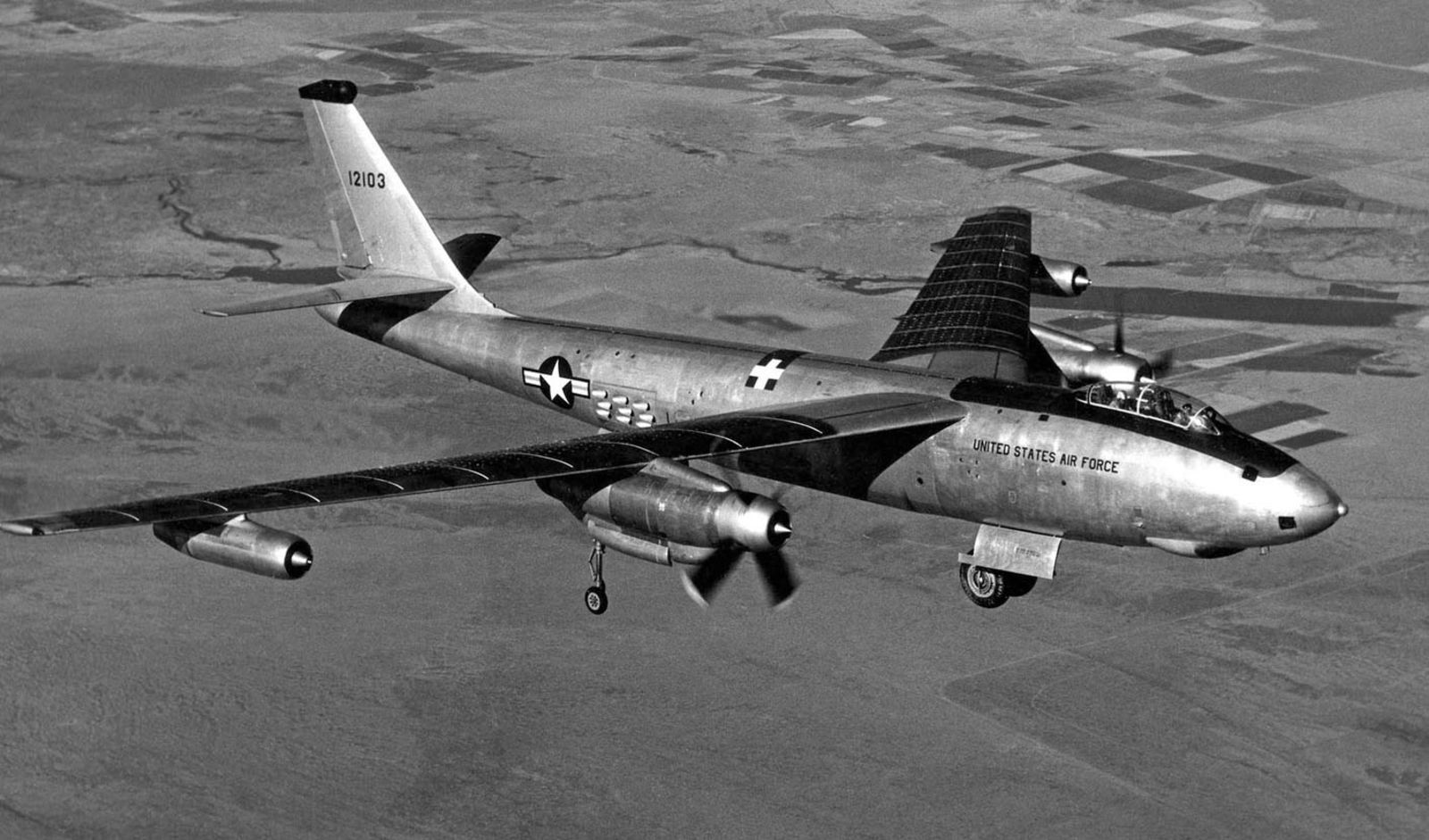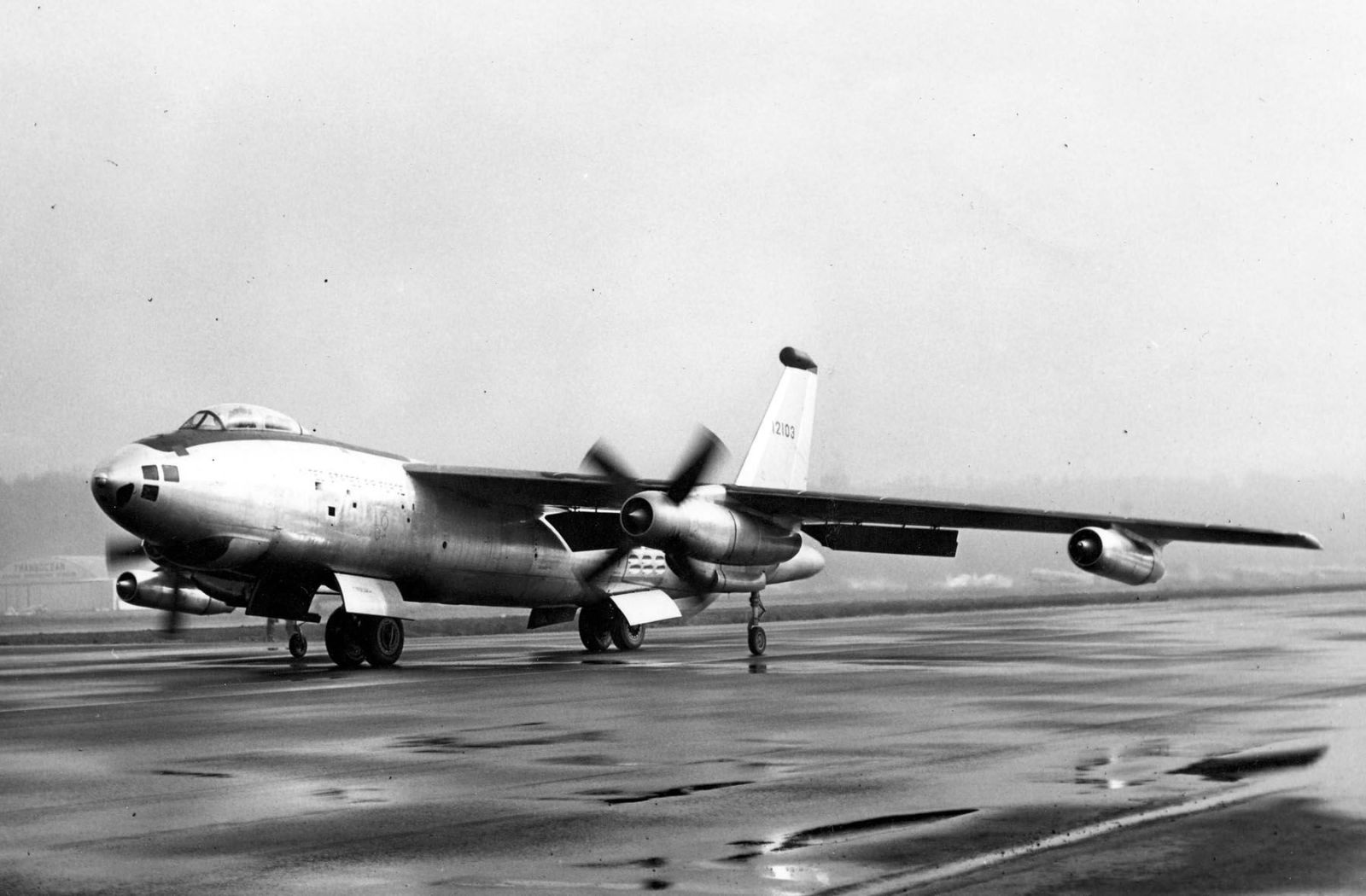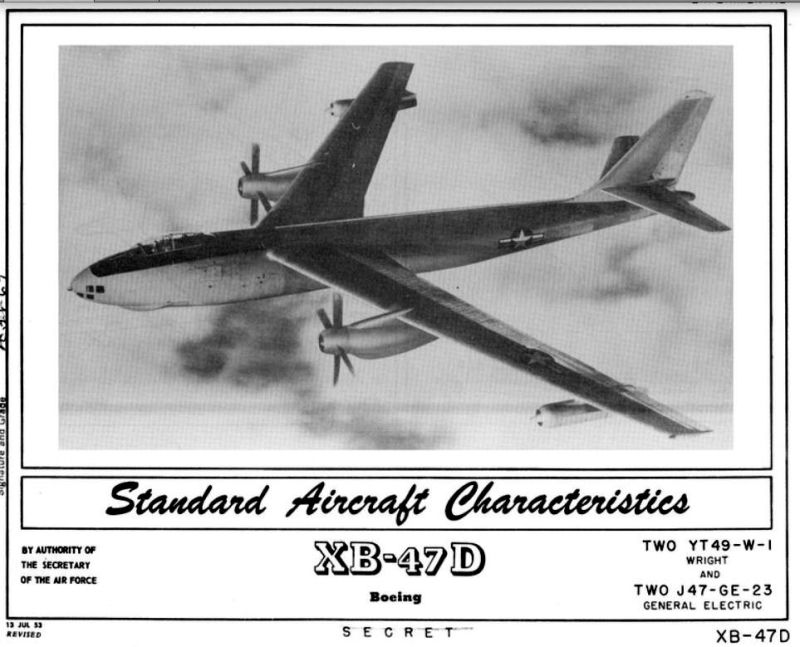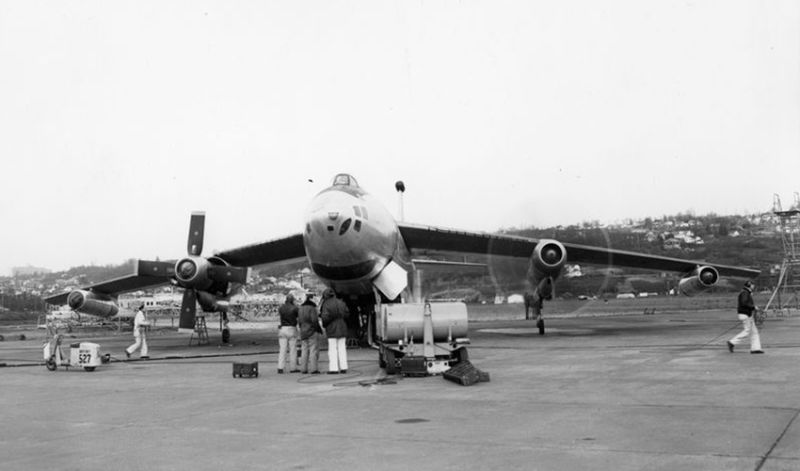
In 1944, the US Air Force began work to field a jet-powered bomber to keep pace with developments taking place in Nazi Germany. A number of manufacturers responded with traditional straight-wing designs, but Boeing got the jump on everybody else by using data on swept-wing aircraft that had been captured from the Germans. The result was the B-47 Stratojet, a groundbreaking aircraft with wings swept at 35º and engines slung beneath the wings in pods, a design that essentially set the standard for bombers and civilian airliners of the future.

However, early jet engines were notoriously thirsty, and the Air Force needed to find a way to extend the range of the jet bombers while not sacrificing speed. So Boeing took two B-47C Stratojets and replaced each inboard pair of jet engines with one 8,500 horsepower Wright YT49 turboprop engine that complemented the single outboard General Electric J47 turbojet engine. The turboprops were fitted with Curtiss reversible pitch props that measured 15 feet in diameter.

Following delays in the development of the turboprop engines, the first XB-47D took its maiden flight on August 26, 1955, followed by the second prototype six months later. The flights marked the first time such a hybrid turboprop/turbojet arrangement had ever flown. The XB-47D did manage to reach 600 mph, but only when going flat out at full power. As a result, the hoped-for fuel savings never materialized, though the reversible props did shorten the landing roll. With performance that was no better than the standard all-jet-powered Stratojet, the project was abandoned after the construction of the two prototypes.


For more stories about aviation, aviation history, and aviators, visit Wingspan. For more aircraft oddities, visit Planes You’ve (Probably) Never Heard Of.
Source: Flight Journal